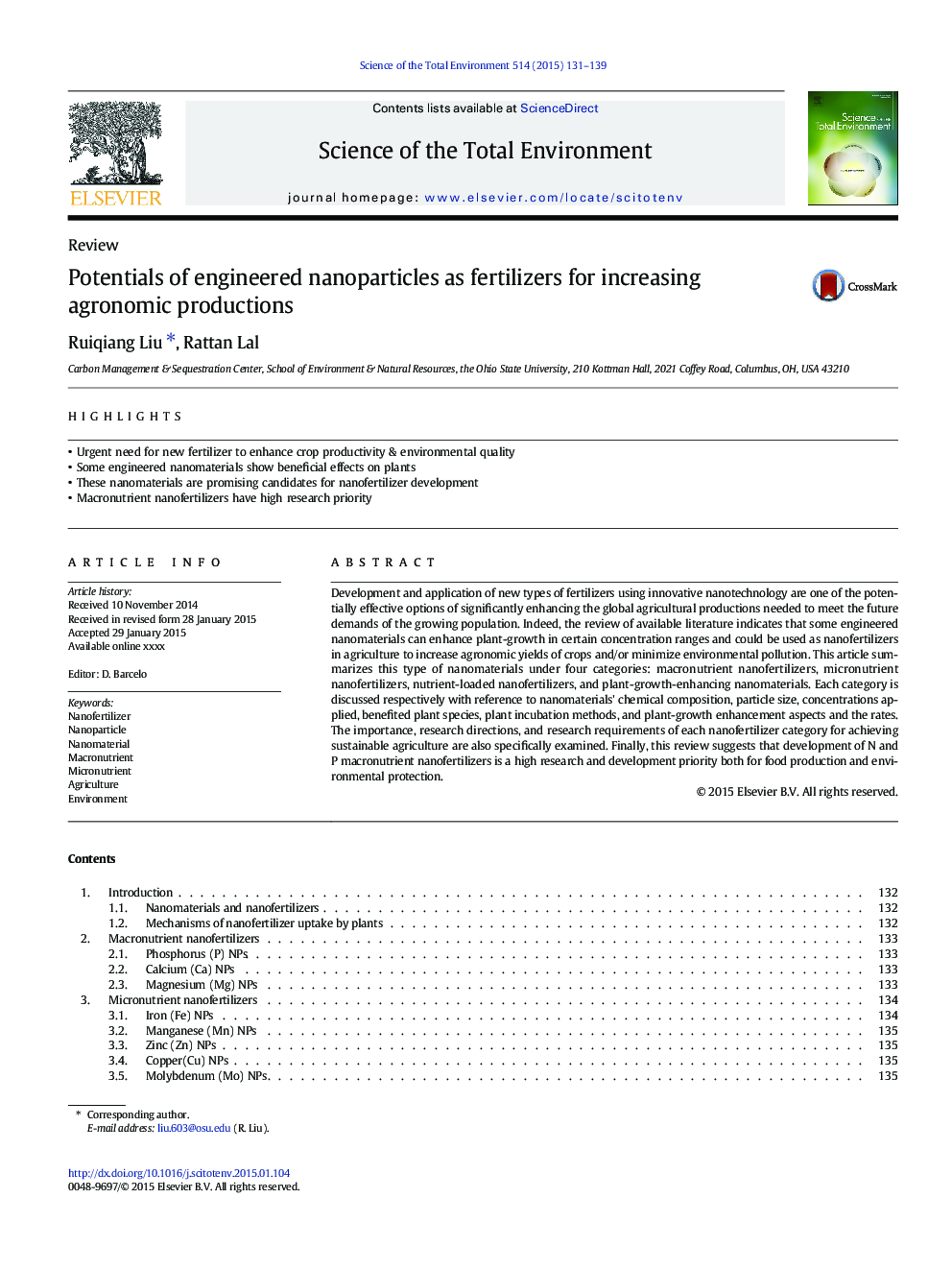| Article ID | Journal | Published Year | Pages | File Type |
|---|---|---|---|---|
| 6327022 | Science of The Total Environment | 2015 | 9 Pages |
Abstract
Development and application of new types of fertilizers using innovative nanotechnology are one of the potentially effective options of significantly enhancing the global agricultural productions needed to meet the future demands of the growing population. Indeed, the review of available literature indicates that some engineered nanomaterials can enhance plant-growth in certain concentration ranges and could be used as nanofertilizers in agriculture to increase agronomic yields of crops and/or minimize environmental pollution. This article summarizes this type of nanomaterials under four categories: macronutrient nanofertilizers, micronutrient nanofertilizers, nutrient-loaded nanofertilizers, and plant-growth-enhancing nanomaterials. Each category is discussed respectively with reference to nanomaterials' chemical composition, particle size, concentrations applied, benefited plant species, plant incubation methods, and plant-growth enhancement aspects and the rates. The importance, research directions, and research requirements of each nanofertilizer category for achieving sustainable agriculture are also specifically examined. Finally, this review suggests that development of N and P macronutrient nanofertilizers is a high research and development priority both for food production and environmental protection.
Related Topics
Life Sciences
Environmental Science
Environmental Chemistry
Authors
Ruiqiang Liu, Rattan Lal,
